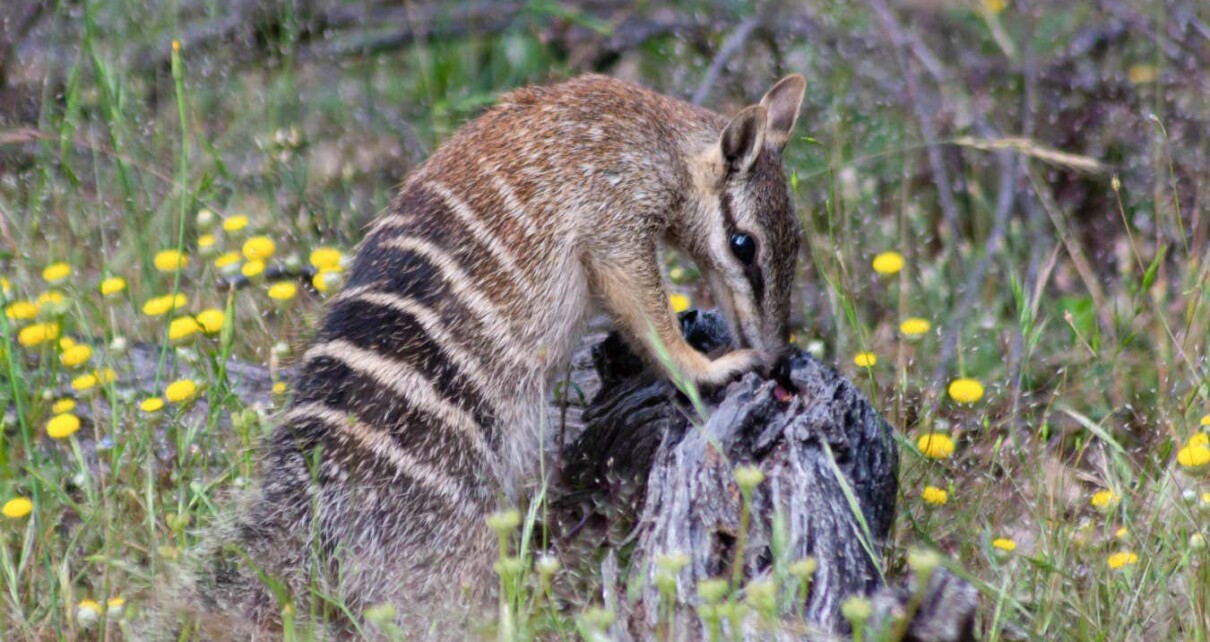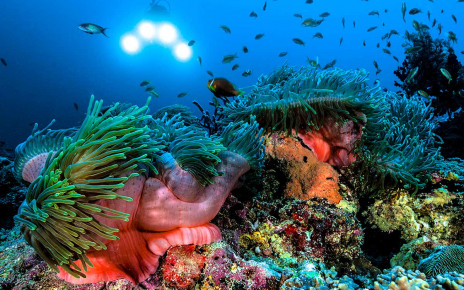[ad_1]

A numbat searching for termites in a fallen log. Their poor night-time vision is part of the reason why they have to seek out food in the heat of the day
Christine Cooper
The special fur that numbats evolved to conserve energy is now putting them at risk of overheating amid Australia’s increasingly hot temperatures.
Numbats (Myrmecobius fasciatus), which are unusual marsupials in that they are active during the day, eat termites hidden under wooden logs and topsoil. Since these insects are a low-calorie meal, numbats – which typically weigh around 500 grams – have evolved fur that absorbs heat from the sun, saving calories that would otherwise go towards generating body heat.
As temperatures rise, that evolutionary trait may be backfiring, with numbats overheating within minutes of feeding under direct sunlight, says Christine Cooper at Curtin University in Perth, Australia.
Numbats used to roam across southern Australia, but over the past two centuries, they have fallen prey to the cats and foxes brought over by European colonisers. Today, these endangered animals are concentrated in just two small nature reserves in Western Australia.
In an effort to raise numbers, conservation groups have been gradually relocating the marsupials into predator-protected areas of their native territory. Global warming, however, has made some of these areas much hotter and drier.
“The unprecedented rates of environmental change now occurring due to human-induced global warming mean that it is critical that we understand the ecological consequences of changes in environmental conditions if we are to predict future patterns of species distribution and abundance, and conserve and manage them,” Cooper and her colleague Philip Withers at the University of Western Australia write in their paper.
To learn more, the pair used a thermographic camera to film 50 of the wild animals as they fed on termites at different times of the day throughout 2020 and 2021.
At each site, they used a portable weather station to record factors such as air temperature, wind speed and humidity. They then plugged this data into a computer programme that models how environmental conditions affect numbats’ internal temperatures.
The pair found that on days of high heat stress – for example, a dry environment with 40°C air temperature – numbats overheat within 10 minutes of being in direct sunlight. They then need to stop feeding and hide from the sun until their body temperature drops.
Shade helps, but is often sparse, so seeking it limits numbats’ termite-hunting turf, says Cooper. The model also suggests that high outdoor temperatures combined with radiating ground heat could cause numbats to overheat even in the shade.
Night feeding isn’t an option for numbats, which have poor night vision and lack the strength to break into the mounds where termites hide at night.
To help overcome these problems, Cooper recommends conservation groups relocate numbats to relatively cooler areas within their territory and ensure there is sufficient shade.
Topics:
[ad_2]
Source link




